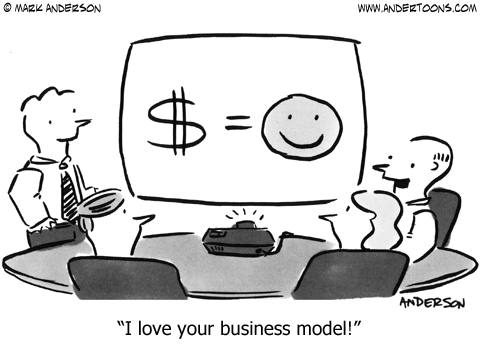Small business owners guide - how to maximize profits!

Here's a big mistake that I see many companies make all the time!
(please note that all numbers below are not quite realistic and are meant to simplify the examples)
A company creates a product - let's call it product X. The company invested $500 into creating Product X and the earnings from each customer is $1. Product X hits the market, quickly resonates with customers and customers start buying/downloading/using Product X. Everyone is excited and the company continues to make enhancements and improvements to the product and it's marketing strategy. Shortly, Product X exceeds 500 users, which means that the company breaks even on Product X and begins to be profitable. Soon, the company decides that it's time to diversify and invests an additional $500 into creating a new product - let's call it Product Z.
Many companies will look at this scenario and see the two products in silos. They'll decide that since they've already received a return on investment on Product X, they should focus most of our marketing efforts and budgets on promoting product Z. Logically, this seems to make sense, however this is faulty thinking!
Some Quick Calculations
Let's assume that the earnings from Product Z is $1/customer and that the earnings from Product X is $2/customer. In this scenario, the company needs 250 new customers for Product X and 500 customers for Product Z in order to break even on the company's investment. Assuming that the cost of promotion compared to product adoption, the company would recoup it's investment much faster by focusing on Product X rather than Product Z.
Alternatively, let's assume that the earnings from both products is $1 but that the size of the market for Product X is 10,000 people and the market for Product Z is 8,000 people. This means that the company requires 5% market penetration with Product X and 6.25% market penetration with Product Z in order to break even on their investment. Assuming that the cost of promotion compared to product adoption is the same for both products, the company will see a positive RoI on it's investment faster if they focus their marketing dollars and efforts on Product X.
Last example - let's assume that the earnings from both products are the same ($1/customer) and that the market size for each product is the same (10,000 people). However, since Product X has been on the market longer, it likely has a higher brand awareness and a higher product adoption than Product Z. Higher brand awareness and market penetration means that Product X would require less effort to gain 500 new customers. Existing customers do a lot of marketing, such as word of mouth and user-generated online content. In addition, brand awareness usually leads to faster product adaption as people are more likely to start using a product that they have already heard of rather than a brand new product.
In Real Life
The reality is that above scenarios are, obviously, not realistic since earnings, market size and effort don't live in isolation. My point is that companies shouldn't look at each product in isolation and shouldn't run a separate Profit & Loss calculation on each product. The company should look at their entire product portfolio as a whole and decide which products they need to focus their marketing budgets and efforts on in order to be the most profitable as quickly as possible.